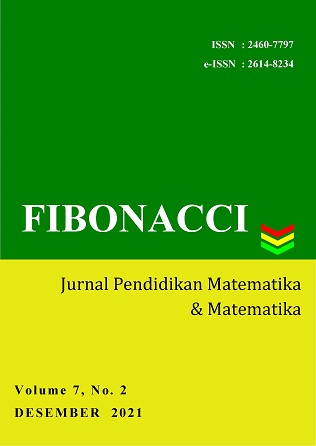ANALISIS HUBUNGAN ANTARA KECERDASAN LOGIS MATEMATIS, NILAI MATEMATIKA SEKOLAH DAN NILAI PADA MATERI ALJABAR BOOLEAN MAHASISWA PADA PROGRAM STUDI PENDIDIKAN TEKNOLOGI INFORMATIKA BERDASARKAN TINGKAT PENDIDIKAN
Main Article Content
Abstract
Article Details
Authors who publish with this journal agree to the following terms:
- Authors retain copyright and grant the journal right of first publication with the work simultaneously licensed under a Creative Commons Attribution License that allows others to share the work with an acknowledgement of the work's authorship and initial publication in this journal.
- Authors are able to enter into separate, additional contractual arrangements for the non-exclusive distribution of the journal's published version of the work (e.g., post it to an institutional repository or publish it in a book), with an acknowledgement of its initial publication in this journal.
- Authors are permitted and encouraged to post their work online (e.g., in institutional repositories or on their website) prior to and during the submission process, as it can lead to productive exchanges, as well as earlier and greater citation of published work (See The Effect of Open Access).
References
Ab, J. S., Margono, G., & Rahayu, W. 2019. The Logical Thinking Ability: Mathematical Disposition and Self-Regulated Learning. J. Phys.: Conf. Ser. 1155 012092, 1–7. https://doi.org/10.1088/1742-6596/1155/1/012092
Amir-Mofidi, S., Amiripour, P., & Bijan-Zadeh, M. H. 2012. Instruction of Mathematical Concepts Through Analogical Reasoning Skills. Indian Journal of Science and Technology, 5(6), 2916–2922. http://www.indjst.orgindianj.sci.technol.
Ausloos, M., Eskandary, A., Kaur, P., & Dhesi, G. 2019. Evidence for Gross Domestic Product growth time delay dependence over Foreign Direct Investment. A time-lag dependent correlation study. Physica A: Statistical Mechanics and Its Applications, 527. https://doi.org/10.1016/j.physa.2019.121181
Costa, J. M., & Miranda, G. L. 2019. Using Alice Software with 4C-ID Model: Effects in Programming Knowledge and Logical Reasoning. Informatics in Education, 18(1), 1–15. https://doi.org/10.15388/infedu.2019.01
Harris, M. 2019. Why We Teach Mathematics to Every Student: Determining Impact of Mathematics on Problem Solving and Logical Reasoning Skills. In Williams Honors College, Honors Research Projects. https://ideaexchange.uakron.edu/honors_research_projects/605
Hoare, T., Mendes, A., & Ferreira, J. F. 2019. Formal Methods Teaching. In B. Dongol, L. Petre, & G. Smith (Eds.), Formal Methods Teaching.Lecture Notes in Computer Science (pp. 3–20). Springer International Publishing. https://doi.org/10.1007/978-3-030-32441-4
Jansson, L. C., Williams, H. D., & Collens, R. J. 1987. Computer Programming and Logical Reasoning. School Science and Mathematics, 87(5), 371–379. https://doi.org/10.1111/j.1949-8594.1987.tb11722.x
Lachmy, R., & Koichu, B. 2014. The Interplay of Empirical and Deductive Reasoning In Proving “If” And “Only If” Statements In A Dynamic Geometry Environment. Journal of Mathematical Behavior, 36, 150–165. https://doi.org/10.1016/j.jmathb.2014.07.002
Li, T., Liu, W., Chen, J., Mao, X., & Mao, X. 2020. IEEE Xplore Full-Text PDF: Tsinghua Science and Technology, 25(3), 325–335. https://ieeexplore.ieee.org/stamp/stamp.jsp?tp=&arnumber=8858087
Tiwari, J. P., & Pande, M. 2019. Boolean Algebra and Harmonic Function Based Computation Analysis: A Survey and Analysis. International Journal of Advanced Technology and Engineering Exploration, 6(53), 107–111. https://doi.org/10.19101/IJATEE.2019.650036

